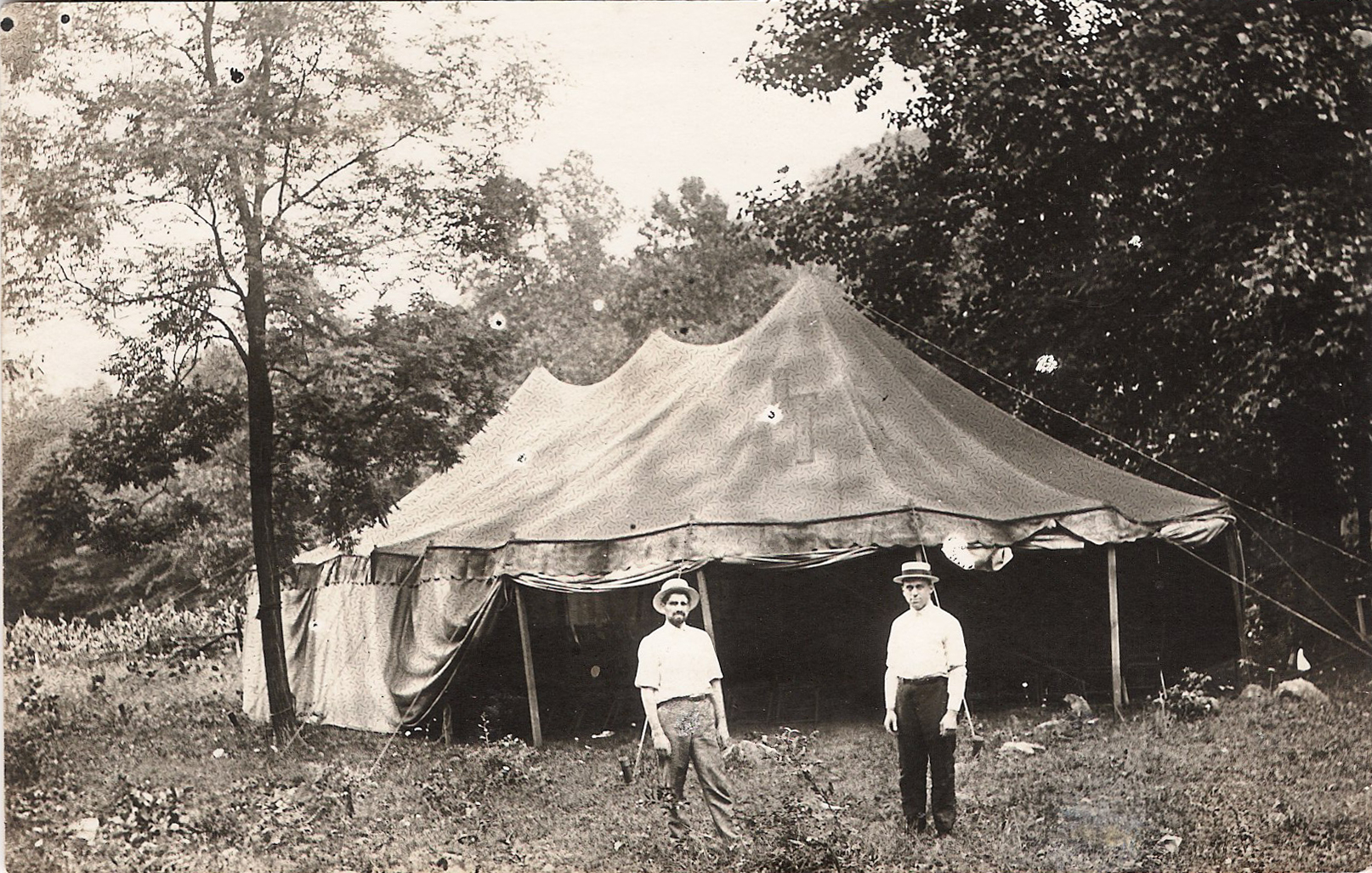
A caption, penned on the back of this photo alongside a 1923 date stamp, reads:
Albert Engle and Jesse Steckley were out with the tent during the summer I (Norman Wingert) was selling “Wear-Ever.” This picture shows their tent.
Tent campaigns of this kind were a staple of Brethren in Christ life in the early part of the twentieth century, and were especially common in the summertime, when more people were free to attend services. This particular campaign, however, is unique insofar as Engle, Steckley, and Wingert were all students at Messiah Bible School and Missionary Training Home at the time.
Some words about the genesis of this campaign, after the jump.
Morris Sider records the origins of their work in his book, Messiah College: A History:
. . . [F]ired by the missions emphasis of the school, [students] began to conduct [revival meetings] in the early 1920s. The first of these had its genesis during the spring of 1922 in discussions at the college among four students — C.N. Hostetter, Jr., Albert Engle, Norman Wingert, and Jesse Steckley. All wanted to do some evangelistic work during the summer. The Home Mission Board gave them permission to do so, although insisting that their project be self-supporting. In the mid-summer the four set out in Norman Wingert’s car in search of white fields to harvest. [1]
Eventually, the quartet split up, with Hostetter and Engle conducting services in Iron Springs, Pa., and Steckley and Wingert holding meetings in a lodge hall in Ickesburg, Pa. At the close of the summer, all four men were encouraged and excited about the results of their efforts, as were their fellow congregants at home in Grantham. Here’s Sider:
Inspired by the possibility of many more [such campaigns], the Grantham congregation purchased a tent (the “tabernacle,” it soon came to be called). Jesse Steckley and Albert Engle, still students, used it in the summer (1923) for a campaign at Iron Springs and at Chestnut Grove near Dillsburg. [2]
Although Wingert failed to mention at which location the photo was snapped, his camerawork nonetheless provides a small window into the summer he exchanged unpaid denominational service for a salesman job — even though he couldn’t quite stay away from the church work he loved.
Notes:
[1] Messiah College: A History (Nappanee, Ind.: Evangel Press, 1984), 95.
[2] Ibid., 96. For more information on the 1923 campaign, Sider cites Evangelical Visitor, July 23, 1923, 7, and October 1923, 5. For a broader historical look at this unique form of evangelism within the context of the Brethren in Christ Church, see Morris Sherk, “Tent Evangelism Among the Brethren in Christ,” in E. Morris Sider, ed., Windows to the Church (Grantham, Pa.: Brethren in Christ Historical Society, 2003), 140-169.

Jesse Steckley was my uncle as my mother was a Steckle;y and there were 14 children in the family. My mother was one of them. Her name was Maggie Leah, married to E. J. Swalm.